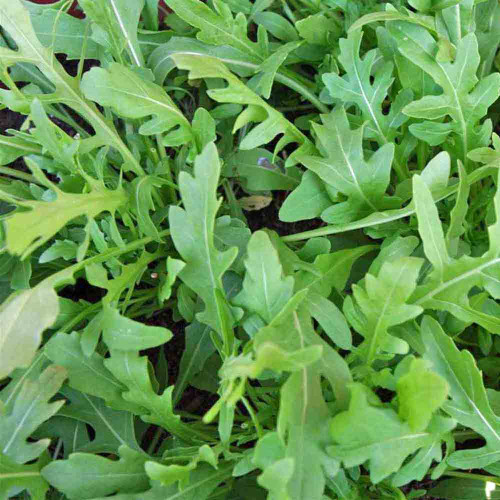Description
Four Sisters Garden Seed Collection – Less Weeding, More Flavor; An Ancient Tradition for Bountiful Harvests
In the summer of 1912, a young scholar named Gilbert L. Wilson arrived at the Fort Berthold Indian Reservation in western North Dakota, eager to learn from the wisdom of the Mandan, Hidatsa, and Arikara Nations—known as the Three Affiliated Tribes. He was researching their traditional ways, hoping to document their Native American agricultural traditions for his studies.
There, he met an elder named Maxi'diwiac, or Buffalo Bird Woman, revered for her deep understanding of the old ways of growing corn, squash, beans, and other crops. She became his guide, and her words became the book Buffalo Bird Woman's Garden, a rare look into the gardening techniques of an established tribe along the Missouri River.
Through Buffalo Bird Woman's eyes, we find a gardening system honed by generations. Unlike the neat rows of modern fields, her gardening approach is a dance of collaboration. Within this ancient knowledge, we learn the story of the Four Sisters garden—a tale of sunflowers, corn, beans, and squash and how they support one another.
Sunflower – the Elder Sister
Buffalo Bird Woman noted how sunflowers towered above other plants, standing tall long before their counterparts dared to sprout. These cheerful giants play a vital role in the Four Sisters tradition. Their deep, sturdy roots, honed by facing strong prairie winds, break up compacted soil. Sunflowers give the other sisters – corn, beans, and squash – a head start as they open the earth with their roots.
Sunflowers also act as beacons, with their vibrant faces turned towards the sun, attracting bees, butterflies, and other beneficial pollinators to the garden early in the season. This early pollination boost benefits all the sisters, promising a more bountiful harvest.
The sunflower is so crucial that it was the first seed planted in the spring. As Buffalo Bird Woman explained, "The first seed we planted in the spring was sunflower. Ice breaks on the Missouri about the first week in April; and we planted sunflower seeds as soon after as the soil could be worked. Our native name for the lunar month that corresponds most nearly to April is Mapi'-o'cë-mi'di, or Sunflower-planting-moon.
Although our sunflower seed was the first crop planted in spring, it was the last to be harvested in the fall."
Corn – the Supportive Sister
Corn represents heritage, with each kernel a connection to generations who have carefully cultivated it. It grows tall and strong, a natural trellis, supporting climbing beans as they reach for the sun.
Buffalo Bird Woman shared her people's tradition, "Corn planting began the second month after sunflower-seed was planted, that is in May; and it lasted about a month. It sometimes continued pretty well into June, but not later than that." She noted, "We knew when corn planting time came by observing the leaves of the wild gooseberry bushes... when they saw that the wild gooseberry bushes were almost in full leaf, they said, 'It is time for you to begin planting corn!'"
Squash – the Protective Sister
Squash, with its sprawling vines and bountiful fruits, symbolizes generosity. Think tender zucchini for fresh summer meals.
Beyond a food source, squash also plays a crucial protective role. Squash’s giant leaves spread across the ground like a living mulch. This natural blanket shades the soil, keeping it cool, minimizing weeds from taking hold, and reducing soil moisture loss. Most squash varieties even boast prickly foliage, offering a gentle deterrent to larger pests and showcasing the garden's natural resilience.
Buffalo Bird Woman shared her knowledge developed over generations: "We planted squash seed early in June, or the latter part of May. In preparation for planting, we first sprouted the seed. At the end of three days, the seeds sprouted nearly an inch and were ready to plant." She noted the careful attention, "The seeds were planted rather under, or on one side of the hill, and about two inches deep in the soil. A careful woman planted the seeds with the sprouts upright, but even if she did not do this, the sprouts grew in quickly and soon appeared through the soil."
Bean – the Nourishing Sister
Beans bring a splash of color to the Four Sisters garden. Beyond their beauty, beans are a source of nourishment and offer strength to their sisters.
Instinctive climbers, pole beans twist and twine around the supportive cornstalks. This vertical space strategy ensures they reach their share of sunlight.
But beans have a hidden talent—they are masters of soil fertility. They form a special relationship with bacteria in the soil, converting nitrogen from the air into a plant-usable form. This natural fertilizer enriches the garden and benefits the beans and their corn and squash sisters.
As Buffalo Bird Woman explained, "Bean planting followed immediately after squash planting. We commonly planted beans between our rows of corn."
Harvesting Timeline
The Four Sisters Garden offers a flavorful journey through the seasons.
- Beans provide tender pods for fresh eating throughout the summer, while others can mature on the vine, becoming a versatile pantry staple for the winter months.
- Squash provides a continuous harvest throughout the season, delighting with its abundance.
- Corn is a sweet celebration food. Feast on fresh roasted ears or let them dry and grind into cornmeal.
- Sunflowers, too, offer a delicious harvest. As their giant heads ripen and droop, harvest their heads in a paper bag to dry, then collect their seeds.
Included in this collection is the following four seed packets:
- Black Russian Sunflower (Approx 50 seeds per pack)
- Golden Bantam Corn (Approx 125 seeds per pack)
- Black Beauty Zucchini Summer Squash (Approx 25 seeds per pack)
- Rattlesnake Pole Bean (Approx 50 seeds per pack)
From the soil to the seed to the food you eat - we'll help you grow your best garden!
















